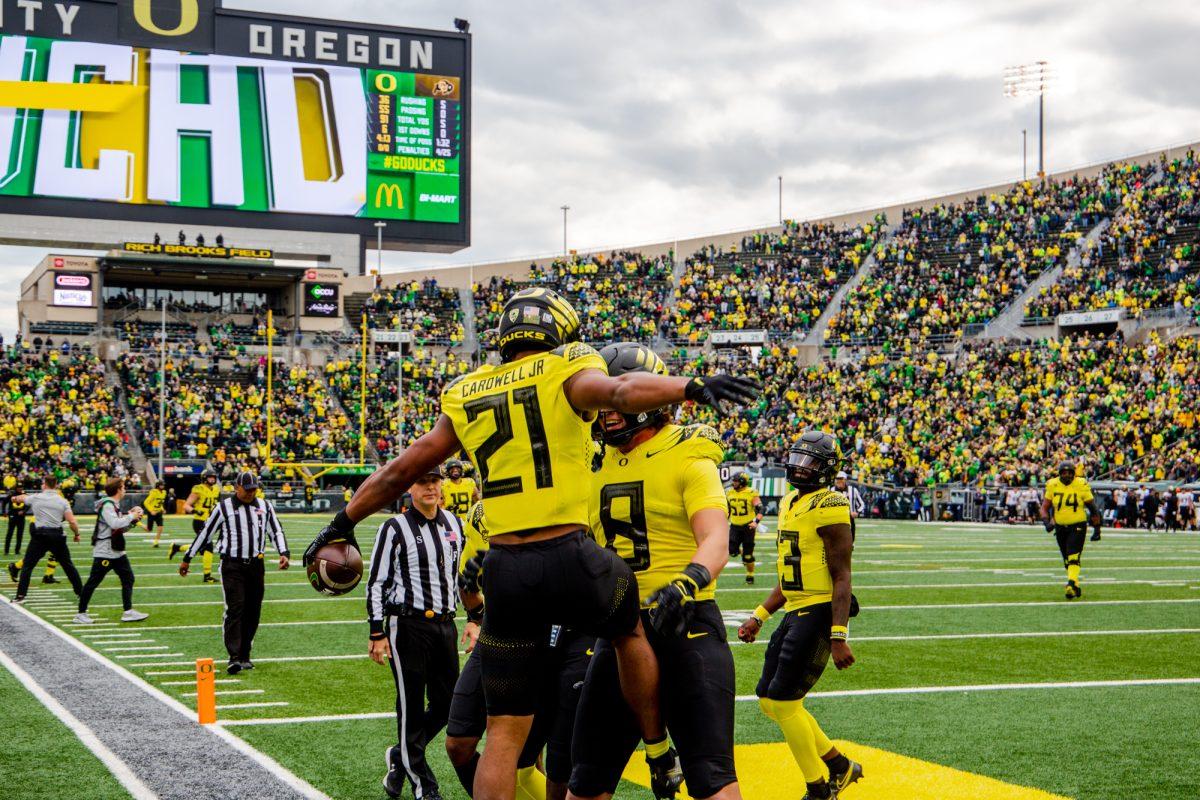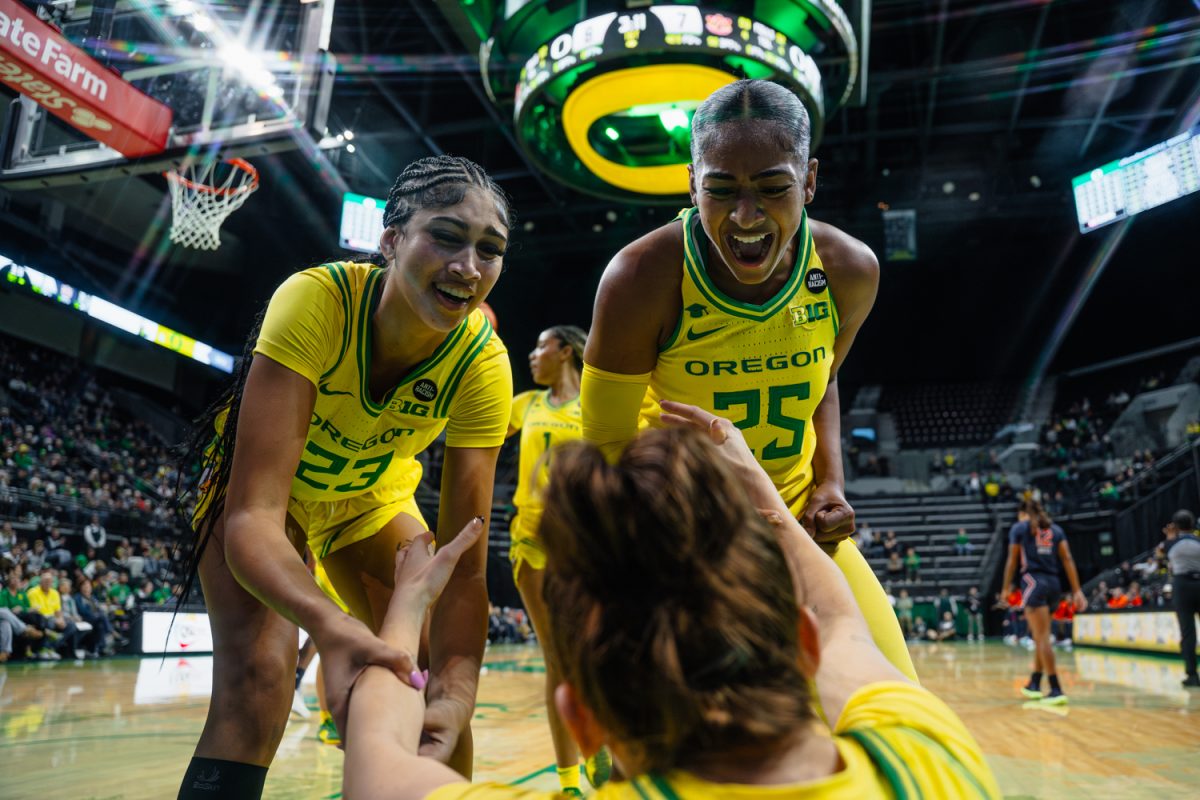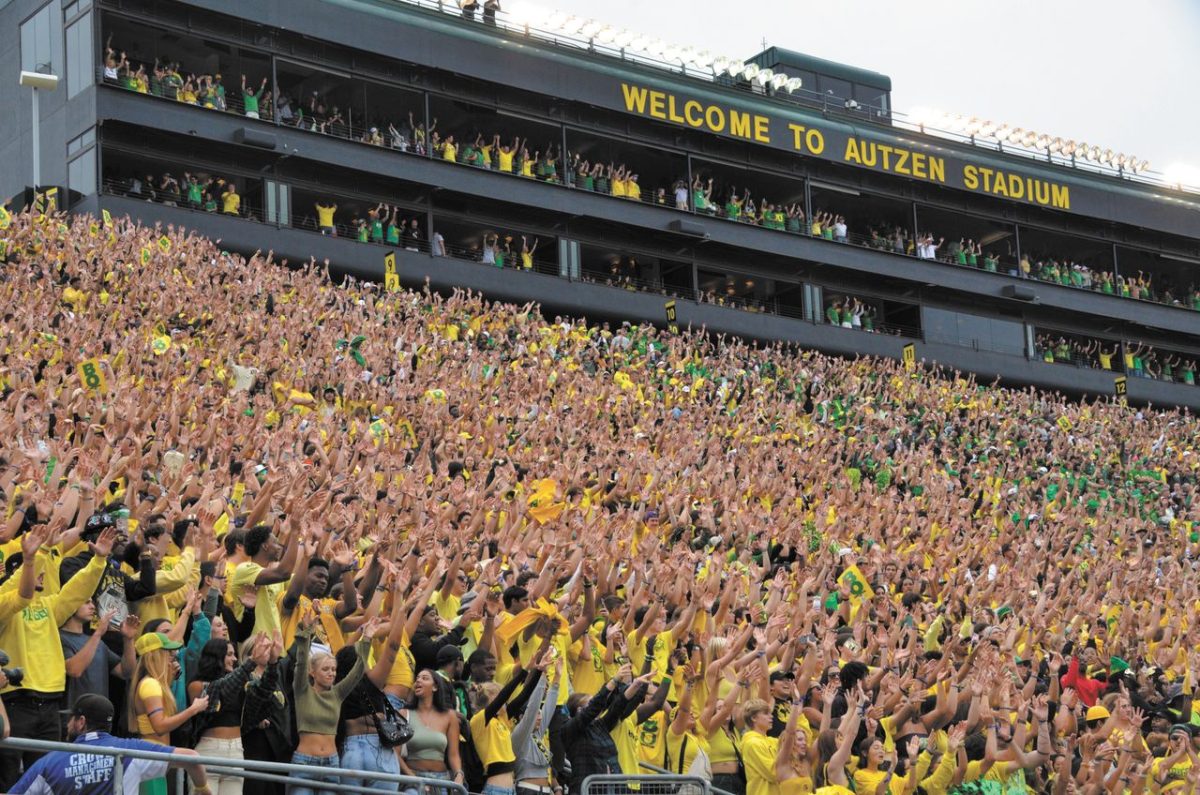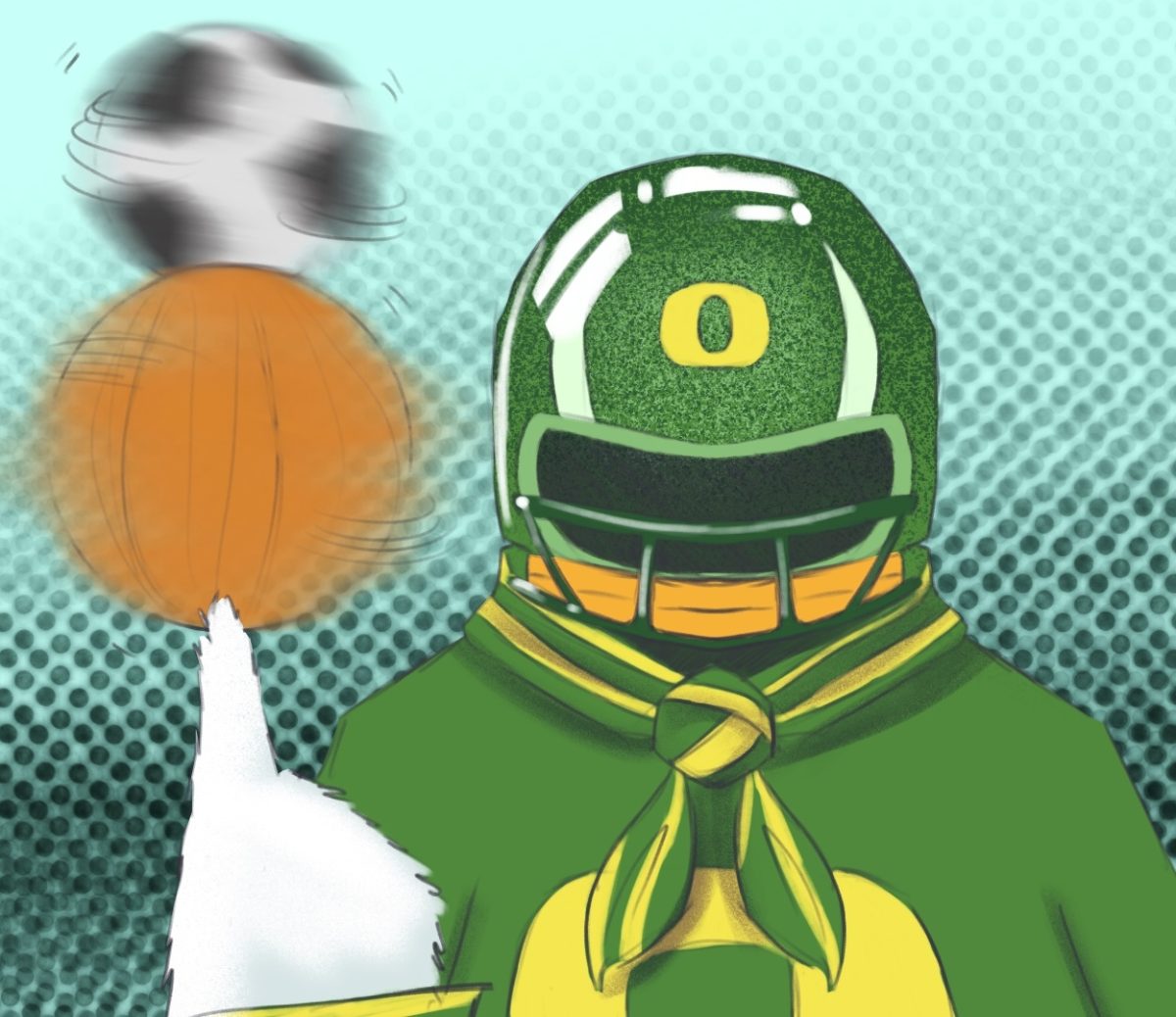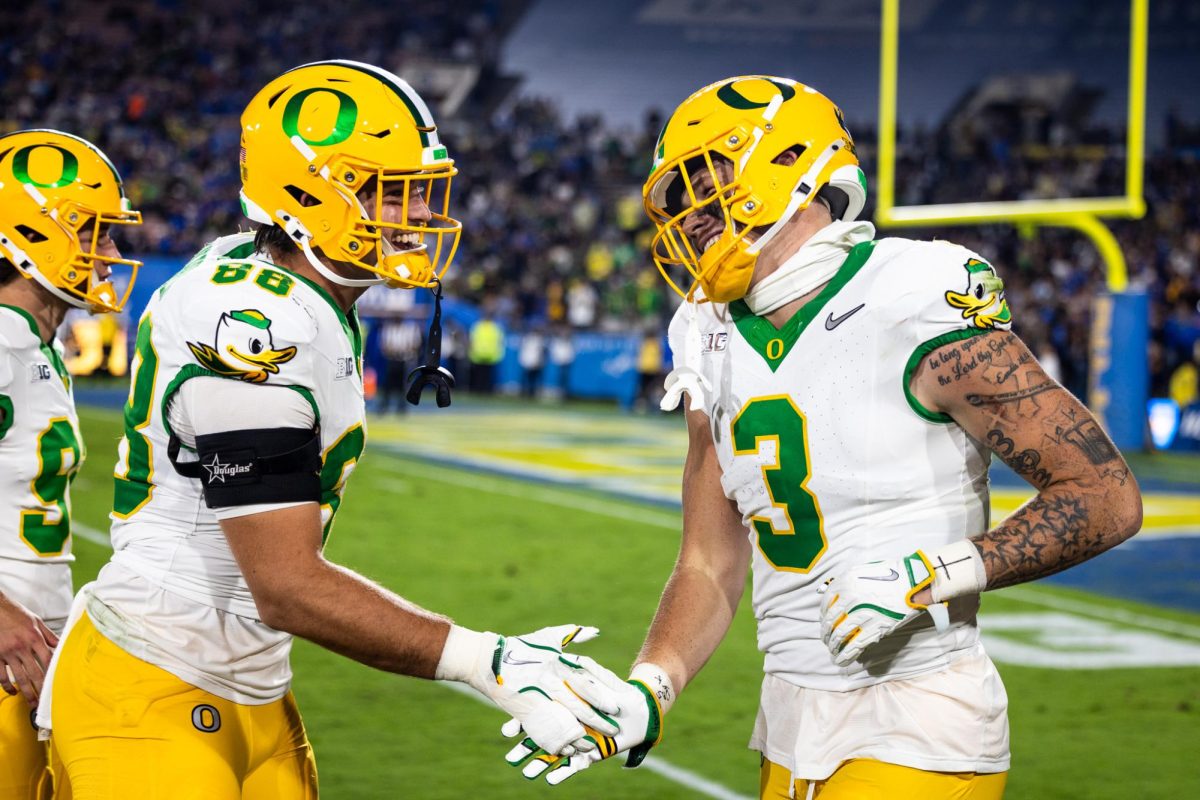Destiny became reality for Oregon running back Byron Cardwell as he trotted into the end zone on the Ducks’ opening drive against the Colorado Buffaloes.
Cardwell left Buffaloes safety Mark Perry in the dust, outrunning the defender’s angle. Perry was left grasping for Cardwell’s jersey.
One that has historic significance stitched into its back.
Cardwell worked hard to gain more responsibility in the Ducks’ offense. He and fellow running back Travis Dye make up one of the nation’s best backfield tandems. Now, Cardwell is fulfilling the high expectations attached to his jersey number: 21.
It’s the same number that was touted by the No. 1 and 2 all-time leading rushers at Oregon: Royce Freeman and LaMichael James.
Cardwell finds comfort in the weight he carries.
Cardwell grew up in San Diego. He always felt at home in Oregon knowing fellow San Diegans Freeman and CJ Verdell found success in green and yellow, his former high school coach and personal trainer Jason Van said.
“Seeing those guys and how they were successful at Oregon made Byron believe he could go out there and be even better,” Van said.
Freeman is the all-time rushing yards leader at Oregon and was selected in the third round of the 2018 draft by the Denver Broncos. Verdell, who’s ninth all-time in rushing yards at Oregon, had 406 yards and six touchdowns through five games before he injured his lower leg earlier this season.
While his predecessors influenced his decision to become a Duck, filling their shoes was never on Cardwell’s agenda.
“He’s his own player and he came to Oregon to further his own individual journey,” his dad Byron said.
When Cardwell first arrived in Eugene, he was buried on the depth chart — an uncomfortable position for a running back who started every season in high school.
He ascended the depth chart quickly as the Ducks lost three notable running backs: Cyrus Habibi-Likio transferred to Boise State, and Sean Dollars and CJ Verdell sustained significant injuries.
Cardwell saw the opening as his chance to prove he was the most capable back to be promoted.
“He didn’t take a backseat or wait his turn,” Van said. “He got as many reps as he could and took advantage of those reps.”
It paid off for Cardwell, who had a breakout game against Colorado. He carried the ball seven times for 118 yards, highlighted by a 34-yard house call.
His opportunities continued to rise in the Ducks’ game against Washington on Nov. 6. He took 16 carries for 55 yards and hauled in his first reception of the season.
While he was unable to break an explosive run, it’s clear the Oregon coaching staff trusts Cardwell with a heavy dose of touches.
Standing at 6-foot, 210 pounds, he presents a hard-nosed, between-the-tackles running style — not dissimilar to the style the Ducks lost when Verdell went down. But defenses can’t judge Cardwell by his build.
“He’s like a train, but he’s elusive at the same time,” Oregon running back Travis Dye said.
And that’s where he catches you: his speed and shiftiness. It’s unexpected but devastating. Dye described the style and strides to that of a gazelle.
“I can catch a lot of defenders off-guard with my speed,” Cardwell said. “My biggest attribute is my speed because a lot of guys don’t think I have it with my size.”
The Ducks utilize their running back rotation to keep defenses on their feet.
They start by getting 5-foot-10, 190-pound Dye into open space to outrun defenders, then they turn to Cardwell with zone reads and stretches to wear tacklers down. Both backs possess different styles of running which allows them to feed off one another and keep defenses guessing.
“[Cardwell] runs with physicality and makes it very tough for the first guy to get him down,” head coach Mario Cristobal said.
That physicality mixed with Dye’s quickness creates a one-two punch that is the heartbeat of the Ducks’ backfield –– one that has catapulted into the top-20 in the nation in rushing yards, yards per carry and rushing touchdowns this season. The Ducks’ rise to No. 3 in the College Football Playoff poll is predicated on the success they’ve found in the running game.
To develop his sturdy build and shifty running style, Cardwell went through extra workouts with Van following high-school practices.
Their collective goal was for Cardwell to bulk up and work on his durability to become a three-down back.
It took dedication to Van’s workout plan which entailed upper body exercises and disciplined eating habits. Cardwell met every one of those expectations so much so that the running back said football became muscle memory.
Cardwell willed himself into becoming a prototypical back. “He’s a Swiss Army knife that’s explosive… He can run; he can block; he can catch; he can even throw a little bit,” Van said.
Cardwell’s recent performances suggest his starting role is going nowhere and the Ducks’ running game will heavily rely on his success. As the season progresses, Cardwell will continue to pave his own path while furthering the legacy of the successful Oregon running backs from his hometown.



